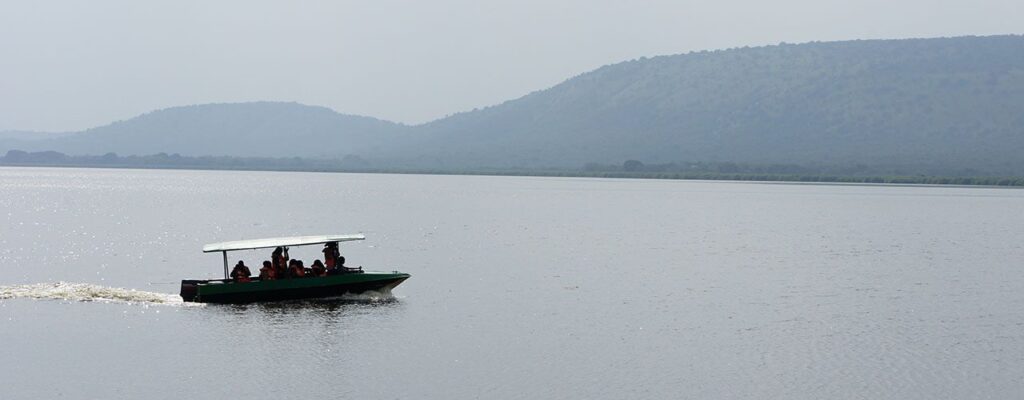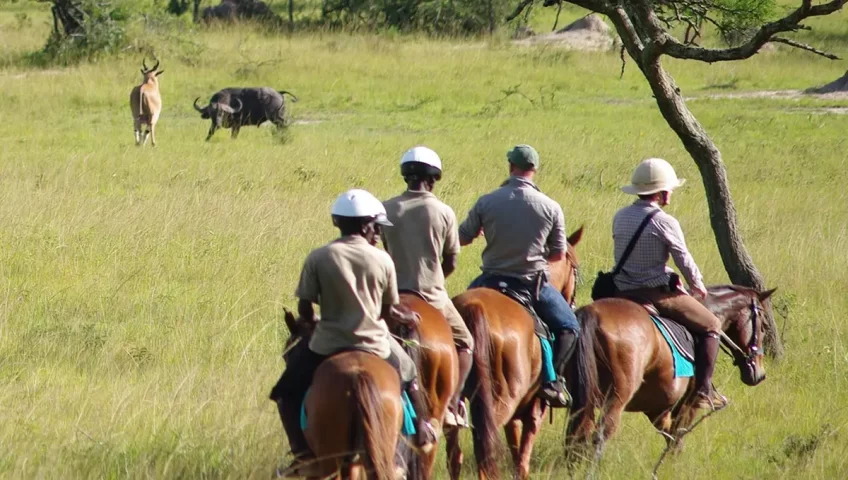Lake Mburo National Park is situated in Kiruhura district, which borders the Isingiro District and the Mbarara District in the east. About 260 square kilometers of its low land are covered by the park. Compared to other national parks in Uganda, Lake Mburo National Park is the smallest and nearest to Kampala, the country’s capital.
Road travel takes 4 hours and 240 kilometers from Kampala. 68 kinds of mammals, over 313 bird species, lakes, marshes, trees, flora, savanna grasslands, and 6 species of fish all call the park home. The Uganda Wildlife Authority oversees the management of all of these species. In 1993, the park was designated as a UNESCO World Heritage Site.
This area was gazetted in 1933 and served as a shooting ground for the locals until it was elevated to a game reserve in 1963. At that time, the pastoralist Banyankole known as “Bahima” were the inhabitants of this area. They kept grazing their cattle there up until 1983, when Obote’s administration upgraded the area to national park status. Between the Rwenzori Mountain and the Lake Victoria shoreline, a rain shadow extends over the park. It is likewise located at a low latitude between 1,220 and 1,828 meters above sea level. Tourists can make a pit stop at the equator to observe the location of the sun’s setting point and enjoy spectacular views of the highest peak, “Margherita peak,” on the Rwenzori mountain, which is the highest mountain in Africa and the entire world.
Massive herds of “impala” are a highlight of Lake Mburo National Park. The majority of these impalas can only be found in this park, along with other antelopes including oribis, warthogs, bush pigs, duikers, tops, elands, and many others. The two brothers used to live together in the valley, and this is when the word lake mburo first appeared. These were Kigarama and Mburo, who just so happened to have a nightmare. Kigarama decided to tell his brother Mburo the nightmare one day and made it clear that they needed to migrate to the hills. Mburo disregarded the fantasy his brother had described and chose to remain, which led to his death when the waters arrived. Due to Kigarama’s forced relocation into the hills, the word “Mburo” was derived from this narrative.
More than 313 different bird species can be seen at the Lake Mburo National Park, including common francolins, green woodhoopoes, Nubian woodpeckers, white-winged warblers, African grey hornbills, and rarer species like the yellow-throated longclaw and the African wetted lover. In addition, it is home to over 68 mammals, including zebras, impalas, road antelopes, jackes, hyenas, and buffaloes.
The inland regions include wetlands with distinctive lakes that are home to over six kinds of fish, including the well-known tilapia, lungfish, and mudfish, as well as waterbirds including shoebill storks, pelicans, black crakes, and aquatic mammals like crocodiles and hippopotamuses. Both black and yellow papyrus and sitatunga antelopes can be found in the marshes. These animals have improved the various Uganda safari Destinations and made the park well-known throughout the world.
The most famous lake in the park, Lake Mburo, has more than six different types of fish and is one of the more than five lakes that make up Lake Mburo National Park. The park is located in western Uganda, to the east of Mbarara, the country’s most populous and picturesque town. The shortest travel time to get there by car is over 4 hours, covering a distance of 240 kilometers.
The Lake Mburo National Park offers a wide range of popular tourist attractions, including bird watching, guided nature walks, cultural safaris, visits to Rubanga Forest, fishing, as well as other sports like horseback riding and bicycling.
Guided nature walks
At Rwonyo Rest camp in the Lake Mburo National Park, visitors can be guided by a guide to the open savanna grasslands. Acacia gerill and Acacia hockii are only two examples of the acacia trees they may see. They may also be taken to the salt links, where thousands of impalas, buffaloes, oribs, topis, and duikers can be seen grazing on the saline terrain.
Birding watching
Over 313 bird species that are appropriate for birding safaris can be found in the park. Large populations of birds, including the African finfoot, mosque swallow, white-winged warbler, green, bare-faced go away, black-billed barbet, Rufous naped, yellow-throated longclaw, Narina trogon, and many others, can be seen in the Rubanga forest.
Boat Cruise
Lake mburo national park is renowned for its distinctive lake mburo and the other four lakes that are situated within the park. Lake mburo is home to six different species of fish, including the well-known tilapia fish and haplochromis. Travelers interested in discovering African lakes can have this incredible experience by hooking fish in the lakes’ natural habitats. Tourists can see aquatic creatures including crocodiles, hippos, buffaloes, and waterbirds like water bills, shoebill storks, pelicans, black crakes, and many others while they are busy enjoying boat launches.

Game drive
The ranger guide can take the tourists on game drives. They will be able to see several kinds of plants, vegetables, and animals, including the well-known zebras, leopards, buffaloes, hyenas, antelopes, jackes, and impalas.
Horse Back riding
The only park that provides tourists with this exclusive horseback riding package while they explore the park’s various features is Lake Mburo National Park.
Cultural encounters
A neighborhood surrounds the park, and its residents entertain the guests by performing cultural dances to traditional music.
Accommodations in Lake Mburo National Park
The Lake Mburo National Park offers distinctive lodging options, including high-end, opulent, and low-cost lodges. Depending on the client’s budget, a few of the lodges are the Montana luxury tented camp, Mihingo lodge, Eagle Nest lodge, Lake Mburo safari lodge, Arcadia cottages, Rwonyo park headquarters, and many others.
Best Time to visit Lake Mburo National Park
The dry season, which lasts from January through March, June through August, and December, is the ideal time to visit Lake Mburo National Park. The best time to travel to Uganda for a Uganda safari Tour is during these seasons when the weather is cooperative and you can take advantage of the excellent opportunities to discover the wild wildlife.
You can also go during the rainy months of February, May, July, and September. A traveler must pack weather-appropriate clothing for this season, including sweaters, jammers, jackets, and gumboots.


